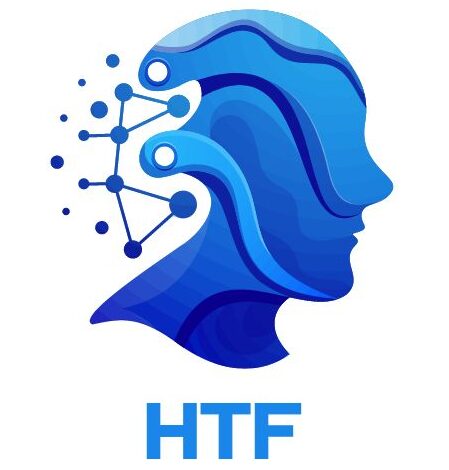The Best Computer Science Books to Dive into in 2024

Introduction
In this blog, we will see the Best Computer Science Books to Dive into in 2024. So computer science is a diverse field. Thus it is not just programming. As well as theoretical studies of algorithms and computational information are not included. Computer scientists design and analyze algorithms to effectively solve problems and evaluate the performance of software and hardware.
In addition to being a good computer science engineer, it is important to learn each subject very carefully. It also covers topics such as computational complexity theory, probability theory, cryptography, formal logic, and the theory and design of programming languages.
Then there is the set of key skills required for computer science. The ability to evaluate and compare the functionality of programs, a good understanding of computer architectures, and knowledge of the tools and patterns used to develop interpretable, maintainable code.
In addition, we have listed some of the best computer science books. Which is used by universities and professional developers to improve their skills. Then the books themselves change dramatically. So every book is extremely informative and is a permanent addition to the ever-changing field of computer science.
1. Growing Object-Oriented Software, Guided by Tests
This test-driven development (TDD) is a proven method for delivering quality software in a short time. So it’s based on a simple idea. Thus create tests for the program before writing the program. Also, it’s not as easy as it sounds. It then takes a lot of skill and determination to deliver the best.
As well as Growing Ob Budget-Oriented Software. Thus how to develop and develop your project that is reliable, relevant, and maintainable. The book, in addition, confronts developers in TDD. As well as it covers all matters. Which ranges from the effective implementation of TDD to the testing of extremely complex features.
In addition, you test daily. After that, the introduction seems to slow down. Also as you read through the chapters, you will find many interesting details. As well as it helps you shape. Thus where is the lack of testing in your current project?
2. Designing Data-Intensive Applications
This means we have a lot of tools for creating, scaling, and maintaining data. These include relational databases, NoSQL datastores, message brokers, and stream or batch processors. So what is the best choice for your application? The design of data-intensive applications is a comprehensive and practical guide. Which covers the strengths and weaknesses of many different techniques for processing, storing, and handling data.
Through which software, software and hardware keep changing. Thus the basic functional concept remains the same. In addition, the book teaches you how to apply those concepts in practice and how to make full use of data in modern applications. Thus the author’s writing style for a technical book is really nice and quite colloquial. Then you are a beginner. Then reading this book seems to be talking to a smart person. Some forget to refer to some of the technical material mentioned.
3. Release It!: Design and Deploy Production-Ready Software
If you look at this book, it will not teach you the importance of object-oriented design or how to write super-efficient code. As well as the way you write your code it will effectively affect you. Thus it emphasizes the things you need to do to get your project into a state. Where it can be safely deployed in a production environment.
As well as publish and show how to design and architect your software for harsh real-world situations. In addition, it covers many different case studies and useful advice. Which will help you reduce the hassle of spending a lot of effort and money in business every year.
Then there are two editions of the book. The updated version includes challenges through today’s system. Thus it also discusses the discipline of applying randomness to uncover systematic problems. This will help you to develop such applications. Which will face real-world challenges. Which will implement zero-downtime upgrades and make cloud-native applications resilient. Also whether your tech stack is based on Java, C #, .NET, or any other system. Through which you are working on a private data center or public cloud. As well as most examples use most of the time on most aspects of your project.
4. Building Microservices: Designing Fine-Grained Systems
This, in turn, has made distributed systems more advanced. So it has shifted from large, code-heavy applications to small, self-contained microservices. Creating such systems is now more difficult and complex than ever before. The author also takes a holistic approach from many different angles to analyze micro-services. So he has used many examples, practical advice, and real-life experiences. Which leads to enjoyable reading.
Through which all those factors have been included in the book. Which you should consider when developing, managing, and growing a microservice architecture. It thus enters into a modern solution for modeling, integrating, testing, implementing, and tracking your autonomous services. Also, the book is quite short with only 250 pages, and it will take a day. It then concludes with a nice summary of each chapter.
5. Extreme Programming Explained: Embrace Change
Extreme programming thus literally changed the way software development practices were practiced. There are two completely different editions of the book as well. In addition, the first one was published in 1999, and the second one was published in 2004. Thus what is “extreme” about Extreme Programming and it teaches four very important things about software development.
In addition, pairing programming leads to higher quality of entire program code written by both teams on the same desktop. So flexible planning is something you should prioritize and do at the most important time. As well as you can set your goals every day. Then team up with customers to make better, more informed decisions if needed. Thus do not treat any part of the project as completely fixed, including documenting the design for change.
These ideas were then mainstream in 2004, they are still relevant, interesting, and inspiring. And the revolution they have produced. This is great for book developers. Such as organizations, businesses, and software prefer to solve software problems.
6. Fundamentals of Software Architecture: An Engineering Approach
This provides a comprehensive overview of many aspects of architecture if you look at software. Thus the software depicts the software architecture in a modern light, taking into account all the methods and techniques developed in the last decade. More specifically, it covers.
In addition to the technical basis of many architectural decisions and engineering practices and operational strategies that have changed drastically in recent years. So repeatable metrics, evaluations, and results add rigidity to the software architecture. Thus efficient team management, meetings, presentations, negotiations, and other soft skills.
It is also recommended for all engineers who are interested in learning more about the role of architect and software engineering methods. Then we do not advise you to read the whole book at once. Through this check what is best suited to your current situation and keep it as a guide for future architecture decisions.
7. Domain-Driven Design: Tackling Complexity in the Heart of Software
Domain modeling plays a major role in software design. So using domain models, developers can better express functions. As well as software can translate it into software implementation. Despite its apparent importance then, there are no source or development guidelines. Which describes effective methods for incorporating domain modeling into the domain software development process. In addition, the book fills that void.
Through which no special programming language is understood in domain-driven design technology to g. Instead, it represents a vast set of design practices, basic principles, and experience-based techniques. Which facilitates software development projects facing complex domains.
8. The Mythical Man-Month
This Legendary Man-Month is an excellent book on the software development process. Which breaks down many persistent legends. Therefore the author’s observations while managing the development of a batch-processing operating system named OS / 360 are based on his experiences with IBM.
Then there is the myth one of the most common myths. As well as having more developers in the project means it will be completed more quickly. Thus it is also not possible to accurately measure the useful work in man-months, an approximate unit of work representing the work done by one person in a month.
9. A Philosophy of Software Design
The Philosophy of Software Design is a short book with many good pieces of advice. So it talks about two strategies to reduce the complexity of software systems. Thus the complexity of accepting simplicity is usually due to dependence and ambiguity. As well as the goal is to reduce the number of dependencies and provide as clear information as possible. Then embrace the modular design and each module should have a simple interface. Which can provide high-level abstracts to customers. So that they do not have to rely on or take care of the details of implementation.
In addition to the author’s common design flaws, deep vs. Shallow modules, general vs. Special purpose interfaces, levels of abstractions, rules for concealing information, and splitting and keeping code are discussed. Then you will see the complexity and modularity in a slightly different way.
10. Algorithms (Fourth Edition)
Algorithms by Kevin Wayne and Robert Sedgwick are widely used in universities and colleges around the world. It therefore covers almost all the critical algorithms and data structures currently in use. Which includes 50 algorithms that every developer should know. Thus the book has six chapters that describe.
In addition, various sorting algorithms are based on scientific and engineering to compare algorithms. Hence various symbol-table implementations such as binary search trees, hash tables, and red-black trees. As well as critical graph-processing problems such as mining spreading trees, width-first and depth depth-first discovery. Through which many string processing algorithms. Such as substrate search and regular expressions. Then there are the connections between scientific computing, systems programming, performance research, commercial applications, and interactivity.
11. Refactoring: Improving the Design of Existing Code
The term refactoring refers to a controlled technique of improving the structure of an existing codebase while maintaining its external behavior. So this book explains exactly what reef act cutting is. As well as why every programmer should do a refactor. Thus how to identify the code required for riff cutting. Whereby how to effectively react, regardless of the programming language used in the project.
The book then begins with a simple example describing the whole process. In addition, it moves on to some early chapters. Which covers more issues around refactoring. As well as exactly how refactoring simplifies and maintains object-oriented code. Thus it has about 70 refactorings. Each has clarity, motivation, mechanics, and simple examples. Then all the tips are illustrated with ‘before’ and ‘after’ codes with a clear explanation. In addition, the last section provides a quick look at refining cutting research.
12. Patterns of Enterprise Application Architecture
In this case, examples of enterprise application architecture are written for experienced developers. Which uses new tools and techniques to create powerful applications. The book therefore explains that despite advances in programming techniques, similar design ideas can be used to solve similar problems.
As well as the author has translated more than 40 recurring solutions into patterns. Which can be applied to all enterprise application platforms. He then divided the book into two parts to better explain each of the architectural aspects. In addition, the first part contains lessons on creating enterprise applications. So the second part itself is a comprehensive reference to the examples. Through this, you will learn how to use and implement each pattern while developing an enterprise application.
13. The Art of Computer Programming
Computer Art Programming is a complete learning tool for those interested in fundamental algorithms, computer science, and mathematics. So for coders, it provides cookbook solutions to their everyday problems. As well as the book has two sections. Thus the first section includes various useful mathematical tools, MIX processors, principles of simple machine architecture, and techniques for the implementation of subroutines and co-routines.
The second section then introduces data structures and methods for implementing and managing this structure. In addition, you will learn Huffman encoding, waste storage algorithms, dynamic allocation algorithms, and the challenges associated with them. In which it is not exactly light reading. It then offers an excellent set of tools. Which can be applied in many scenarios. Problem sets are then a better option for solving sudokus in a concise, interesting, and free time.
Thanks for reading The Best Computer Science Books to Dive into in 2024, I hope you enjoyed reading this and got to know it.




